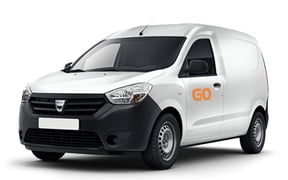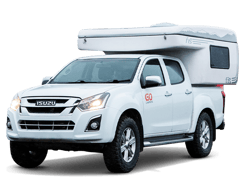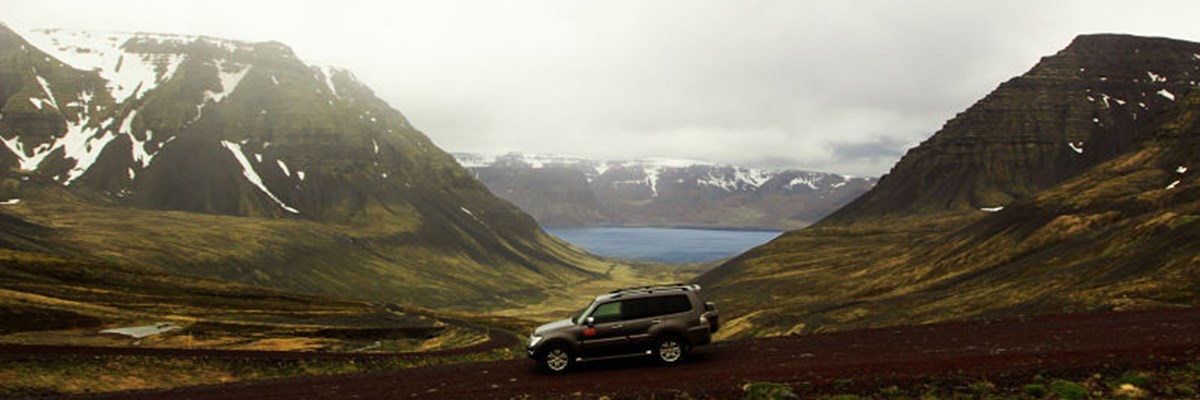
The Go Campers Guide to the Westfjords
Exploring the rugged and remote beauty of Iceland's Westfjords is a thrilling journey for every traveler. To make the most of your adventure in this captivating region, consider the convenience of Iceland campervan rentals. Our comprehensive guide on Iceland campervan rentals offers valuable insights into selecting the perfect vehicle for your Westfjords exploration. With a campervan at your disposal, you'll have the flexibility to traverse the winding roads, visit hidden gems, and embrace the untamed landscapes of the Westfjords. From the majestic cliffs of Látrabjarg to the soothing hot springs of Drangsnes, this guide provides the ideal companion for your Icelandic adventure. With Iceland campervan rentals, you can experience the Westfjords on your terms, creating unforgettable memories along the way.
The Westfjords of Iceland is where the extremes of the country all collide. Soaring table-topped mountains emerge from silent fjords, where only a handful of towns cling to the coast line and a traditional way of life. It’s isolation from the rest of the country means that it sees the least number of tourists; there are more who venture up into the highlands for the three months they’re accessible than visit here. But for those who travel here, the incredible feeling of being the only ones at the end of the earth away.
Road map at the end of the article
Travelling into the Westfjords is a time-consuming undertaking. It’s far bigger than it looks and takes a lot of time to navigate. While the region only comprises of about 10% of Iceland’s landmass, it also represents about 50% of Iceland’s coastline, and its along that coastline where you’ll find the rough roads. Usually it takes a day’s detour off the Ring Road to get into the fjords, so many decide not to do it. But for those who do, they discover one of Iceland’s best kept secrets. Read on to discover the best of the region, and how to tackle it in a campervan.
How Much Time Will You Need?
It’s a question many ask us while they avidly gaze at the Westfjords on the map in our office at Go Campers. As stated above, it’s a big undertaking, and we generally recommend spending 3 to 4 nights camping out in the region to visit all that it has to offer. Driving up and down the fjords is a tiring but rewarding task.
Services
The towns in the Westfjords are few and far between, but of course you can find a small shop and gas station in all of them. This is generally where all the campsites are located as well, so you’ll likely be returning to the civilization at night.
The cheapest groceries you’ll be able to find will of course be at the supermarket Bonus. However, the only one in the region is in the capital, Ísafjörður. If you’re catching the ferry across from the Snæfellsnes Peninsula, there is also a store in Stykkishólmur.
For the most part, the gas stations in the region are self-service. This means that you can only pay with card and need a pin number on that card. If the card that you have requires you to sign, your only option will be to purchase a pre-paid fuel card before you reach the region, or plan to fill up at the major stops.
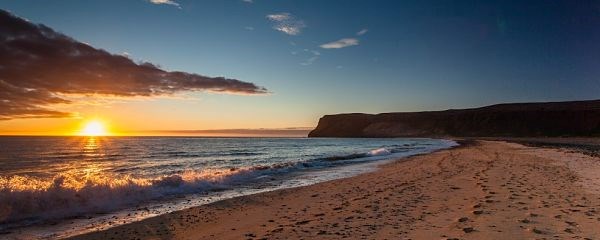
The Westfjords in a Campervan
For the most part, you don’t necessarily need a 4x4 to travel through the Westfjords. The roads are rough in a lot of the areas, but there’s only one F-Road that is off limits to regular vehicles. Campsites are regular and well-equipped, offering gorgeous views over the mountains and fjords. For a complete list of the campsites in the area and their opening dates, check out our map of campsites in the country.
What to See and Do
One of the best things about the Westfjords is that just driving through them is an experience to remember. Waterfalls with no names stream down from the tops of the mountains everywhere, joining rivers that wind their ways out to the fjords. The mountain passes provide astounding views over the region, and the small towns are all unique and welcoming. Hot springs hide all over the fjords, as do wonderful hiking trails. On top of all that, there are some of Iceland’s greatest attractions.
Dynjandi is a crashing waterfall found roughly in the middle of the region, which is one of the most impressive in the entire country. What would draw an unimaginable crowd if it were found on the ring road, it’s amazing to sometimes have this waterfall all to yourself. Crashing down over several cliffs, it almost resembles a staircase. There is a trail that leads you up to the very base of the waterfall, where you can really appreciate its size and power.
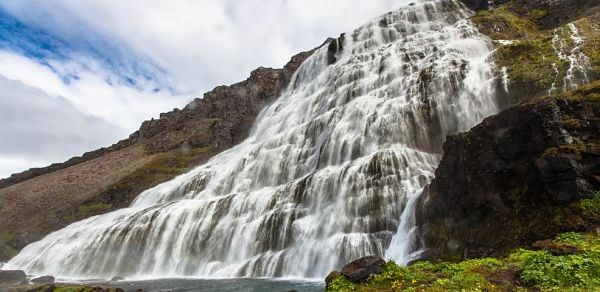
Widely considered one of the best bird-watching locations in all of Europe, Látrabjarg is a long series of sea cliffs that swarm with many different species of birds, including the puffin, during the summer months. Stretching for about 12km along south of one of the Westfjords peninsulas, this is also the westernmost point of Iceland. The large cliffs plunge hundreds of metres into the ocean below, and a hiking trail clings to the tops of the escarpments, leading you the 12km to Rauðasandur. This ‘red sand beach’ can also be reached by campervan, and there is a beautiful campsite right next to the sand where you can often find seals sun bathing or playing.
Our article: Where to find the puffins
The northern part of the Westfjords is made up of the Hornstrandir Nature Reserve, a wild and unforgiving place. No roads lead you into the region, you must go on foot or by boat, but what awaits is an unforgettable experience. Hiking through the uninhabited nature reserve might let you catch a sighting of the elusive Arctic Fox, Iceland’s only native land mammal. Visiting this area requires a lot of planning, as there are no services in the entire region.
The Westfjords has some of the best hot springs and pools in the whole country – mostly because they’re deserted. You can find a lot of hot springs hidden within the fjords, often without any signage. Check out the map below if you’re interested in taking a relaxing dip in the Westfjords.
The Old Herring Factory in Djúpavík is an abandoned wreck of a factory but is an interesting site to feel the history of the region, and Vigur Island is a perfect spot to walk amongst the varied birdlife that flocks to Iceland over the summer months.
Towns
Ísafjörður is the capital of the region, but with a population of just 2500 people don’t expect a big bastion of civilisation. The town is perched on a piece of land that juts out into the dark blue waters of the fjord and is surrounded by some of the tallest mountains in the region. Here you can find a scattering of restaurants, cafes and bars, and this is also where you can catch a ferry over to the wild Hornstrandir Peninsula.
Nearby to the town is the beautiful Bolafjall Mountain, which if you’re feeling fit is a great hike to do, offering great views over the area and towards Hornstrandir. The next town over is Súðavík, a quirky little place and home to the Arctic Fox Centre. Head the other direction to find Flateyri, a quaint place with a long history of avalanches; check out the avalanche wall above the town protecting it now.
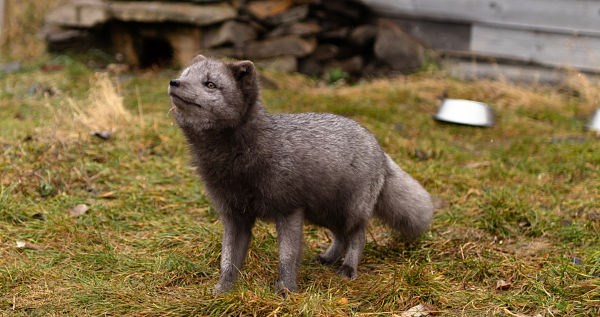
Bildudalur is where you can find the intriguing and mysterious Icelandic Sea Monster Museum, well worth stopping at. Further to the south and close to the Látrabjarg cliffs is Patreksfjörður, a beautiful town and biggest settlement you come across if you’ve travelled along the southern edge of the region. This is also the best town to base yourself from if you’re going to be exploring the Látrabjarg Peninsula in detail. The campsite here has a well-equipped indoor cooking facility, with showers and toilets.
Below you’ll find a map with all of the above locations marked down, and many more. However, we, we don’t want to give away everything – part of a good campervan trip in Iceland are the unexpected places you stumble across along the way.
Related articles

10 Popular Icelandic Dishes you Need to Try
We've rounded up 10 of the most popular Icelandic dishes to ensure you have an authentic experience when travelling through the country.
Read more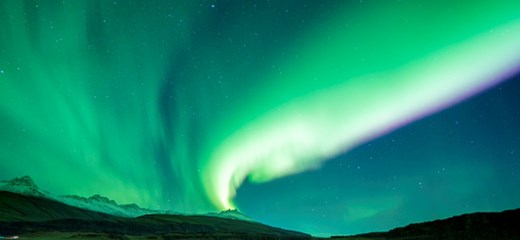
Hiking in Iceland in the Autumn
Hiking the endless trails scattered across Iceland is always a rewarding experience, but doing so in Autumn is even more magical.
Read more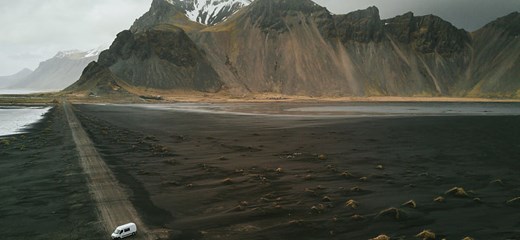
The Campers’ Travel Guide to Iceland’s East Fjords
Untouched and wild, it’s all about slow travel and good weather in Iceland’s most underrated region: The East Fjords. Most travelers will pass this by on their ring road camper trips. If you’re looking to leave the crowds behind and discover your own adventures, the East is the place to do it.
Read more James Taylor
James Taylor